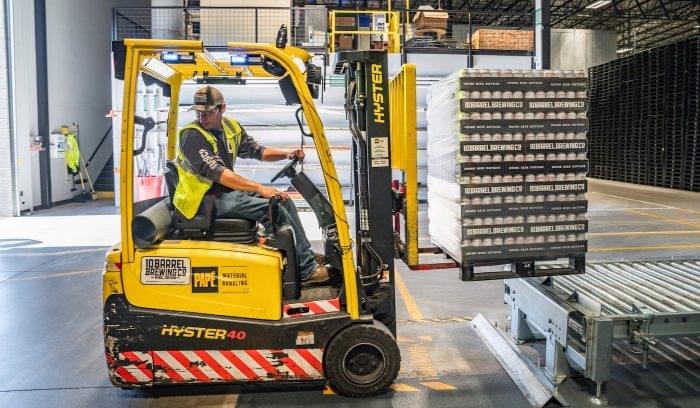Supply chain management (SCM) is the collection of tactics and tools that help companies understand and optimize the performance of their entire supply chain from raw materials through product returns. Supply chain management gives companies insight into how efficiently each of their suppliers, logistics partners, and manufacturing plants work together to deliver final products to consumers.
Who uses supply chain management?
Supply chain management techniques are used by companies of all sizes and in every industry. Manufacturing, retail, restaurant, agriculture, hospitality, technology, transportation, utilities, oil and gas, and healthcare all rely on other companies for raw materials, products, parts, or delivery systems. SCM software helps companies make sense of connections to suppliers and purchasers.
A supply chain has many moving parts and often combines the efforts of several different companies. As a result, SCM tools must include many customization features and integrations with other software. These features allow up to date information to pass between the interconnected parts of the supply chain.
What are the five basic components of supply chain management?
There are five main parts of supply chain management, and each of these parts create data that should be centralized in a single SCM software. The five main parts of supply chain management and the types of tools used in each part are:
- Plan: Project management, product development, and data analytics tools are used to research and develop new products or improve existing processes.
- Source: Customer relationship management (CRM), invoicing, contracting, and price compare tools are used to find and contract with the best quality suppliers at the best price.
- Manufacture: Plant management, product development, and account management tools ensure the on-time receipt of raw materials and delivery of completed products.
- Deliver: Logistics and route planning tools optimize the movement of raw materials, parts, supplies, and finished products to all points on the supply chain.
- Return: These features return unwanted, unused, or faulty products and materials to the correct provider for a refund or exchange and collect data that may be useful for regulatory compliance.
Also Read: The Best Supply Chain Management Software & Tools 2021
Why is supply chain management important?
Due to the complicated nature of each of the five components of the supply chain, a SCM software is vital to centralizing and analyzing data points from each part of the process. This is especially true for multinational companies that require strict accounting of data points for regulatory, tax, or auditing purposes.
Supply chain management software also lets companies react quickly to changing political, social, or environmental conditions that would affect the speed of production or delivery of goods. If a hurricane hits a supplier in Mexico, the Chicago manufacturer can source, vet, and arrange deliveries from suppliers in other areas that aren’t affected.
What are the benefits of supply chain management?
Many companies saw the importance of supply chain management in 2020 due to the COVID-19 pandemic. Shipments from China and other countries were shut down or delayed as early as January. Restaurant food supplies were overloaded when restaurants shut down, and simultaneously grocery store shelves were bare. Hospitals and healthcare providers were unable to find masks and personal protective equipment, and industrial manufacturers pivoted to build much-needed ventilators. The flexibility of these industries and their abilities to adapt to changes in their supply chain and markets were due in large part to supply chain management and the software that powers it.
The benefits of SCM software reach beyond reactionary efforts to contain the effects of a pandemic. Companies that implement supply chain management software find that they:
- Reduce costs: Companies spend less on raw materials, parts, labor, and logistics because they can quickly pivot between suppliers, get ahead of changing market conditions, and negotiate for better contracts
- Improved time to market: SCM platforms reduce bottlenecks at every stage of a product’s life cycle by smoothing organizational communication
- Greater flexibility under stress conditions: While we can’t predict every disaster, companies that have recovery plans and backup providers on hand to cover lapses are better able to successfully pivot under stressful conditions
- Improved customer relations: Companies with organizational insight into their full supply chains are in the position to make promises they can keep regarding product delivery, levels of service, and communication about delays
- Data centralization: Tomorrow’s technological advancements rely on the data companies can collect today. Using a centralized SCM system can improve data quality
It’s no secret that consolidating your software into ERP or marketing automation tools can help your team become better organized and reduce costs. But a supply chain management system goes a step further by giving companies detailed insight into how their connections with all of the points of their supply lines are connected. Understanding how an earthquake in Japan will affect the plant in Berlin or the delivery to Canada can help prevent profit loss and customer dissatisfaction.
How to choose supply chain management software
Companies should look for a supply chain management software that’s tailored for their industry and can manage the company’s unique processes. Consider your company’s budget — including the opportunity cost of not implementing the system. Then speak with a trusted partner like TechnologyAdvice who can help you find the right supply chain management software for your needs. Use our Product Selection Tool for SCM software and receive a short list of vendors who meet your company’s feature requirements.

